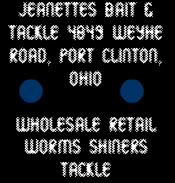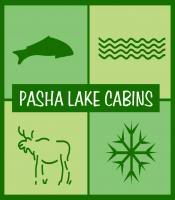Summer Months-When Where and How
Page 1 of 1
 Summer Months-When Where and How
Summer Months-When Where and How
Deep-water Considerations for August Fishing Success
by Fisheries Biologist Scott Hale
Hot, humid, and bright days of August often turn angler’s thoughts to “going deep” in pursuit of bass, saugeye, muskie, crappie, catfish or other favorites. However, in many Ohio reservoirs one key to summer fishing success is to avoid fishing too deep, because doing so could put unnecessary distance between you and the fish. Some reservoir fish can have rather specific temperature preferences, but all of them require oxygen to survive; therefore, during summer months they may compromise a selection of depths with preferred water temperatures for those with adequate oxygen.
In most Ohio reservoirs, the onset of summer temperatures leads to the creation of three distinct layers of water that form between the surface and the bottom. These layers include a warm and oxygen-rich upper layer, a cool oxygen-poor lower layer, and a very thin intermediate layer that separates the two. During the summer months these layers rarely mix. The intermediate layer is where water temperature changes rapidly with depth, yet adequate oxygen is available for fish to survive. This intermediate layer is called the “thermocline”. The thermocline begins forming during late spring, becomes very pronounce during summer, and typically vanishes during mid- to late- September when cooling temperatures encourage reservoir waters to mix.
Knowing the depth of the thermocline can help anglers reduce their search time for fish. With very few exceptions, fishing below the thermocline results in presenting lures or baits in fishless water, so anglers can quickly avoid fishing these unproductive waters. With these waters eliminated, fishing depths at or near the thermocline is worth consideration, particularly for fish such as muskie, walleye, or crappie that often position themselves in or near these cooler waters during portions of summer days. In some cases, the best locations to try will be areas where the thermocline contacts the bottom. For example, where the thermocline is 14-16 feet deep, fishing a main lake point at a 10 to 14-foot depth might produce action. Another strategy is fishing open-water areas for suspended fish at the depth of the thermocline or immediately above that depth. Good areas for catching suspended fish are often adjacent to areas that once held fish before the thermocline became established.
Thermoclines generally form between 6 and 20 feet below the surface in Ohio reservoirs. Specific depths of a thermocline within a particular reservoir can vary substantially from June through September, and may even vary a bit from one day to the next depending upon prevailing weather conditions. The best way to learn where the thermocline is currently located in some reservoirs is to search the internet for current temperature and oxygen information. This information is often provided for dams controlled by the United States Army Corps of Engineers, which operates most of the largest reservoir dams in Ohio. Ohio reservoirs fall within the Pittsburgh (northeast Ohio reservoirs), Huntington (southeastern Ohio), and Louisville (central and western Ohio) Districts of the Corps. See:
Pittsburgh: www.lrp.usace.army.mil/
Huntington: www.lrh.usace.army.mil/
Louisville: www.lrl.usace.army.mil/
Go to the USACE website for the Louisville District at http://www.lrl.usace.army.mil/
View the temperature and oxygen profiles and identify the thermocline as the depth with the most rapid changes in both oxygen and temperature. (To directly view the Caesar Creek Lake temperature and oxygen profiles click http://www.lrl.usace.army.mil/wc/wq/cck.html ).
As August begins, carefully consider the depths that you choose to fish and give some thought to reservoir thermoclines as a guide to summer success. A few minutes on the internet prior to your next trip may save you some time between bites!
by Fisheries Biologist Scott Hale
Hot, humid, and bright days of August often turn angler’s thoughts to “going deep” in pursuit of bass, saugeye, muskie, crappie, catfish or other favorites. However, in many Ohio reservoirs one key to summer fishing success is to avoid fishing too deep, because doing so could put unnecessary distance between you and the fish. Some reservoir fish can have rather specific temperature preferences, but all of them require oxygen to survive; therefore, during summer months they may compromise a selection of depths with preferred water temperatures for those with adequate oxygen.
In most Ohio reservoirs, the onset of summer temperatures leads to the creation of three distinct layers of water that form between the surface and the bottom. These layers include a warm and oxygen-rich upper layer, a cool oxygen-poor lower layer, and a very thin intermediate layer that separates the two. During the summer months these layers rarely mix. The intermediate layer is where water temperature changes rapidly with depth, yet adequate oxygen is available for fish to survive. This intermediate layer is called the “thermocline”. The thermocline begins forming during late spring, becomes very pronounce during summer, and typically vanishes during mid- to late- September when cooling temperatures encourage reservoir waters to mix.
Knowing the depth of the thermocline can help anglers reduce their search time for fish. With very few exceptions, fishing below the thermocline results in presenting lures or baits in fishless water, so anglers can quickly avoid fishing these unproductive waters. With these waters eliminated, fishing depths at or near the thermocline is worth consideration, particularly for fish such as muskie, walleye, or crappie that often position themselves in or near these cooler waters during portions of summer days. In some cases, the best locations to try will be areas where the thermocline contacts the bottom. For example, where the thermocline is 14-16 feet deep, fishing a main lake point at a 10 to 14-foot depth might produce action. Another strategy is fishing open-water areas for suspended fish at the depth of the thermocline or immediately above that depth. Good areas for catching suspended fish are often adjacent to areas that once held fish before the thermocline became established.
Thermoclines generally form between 6 and 20 feet below the surface in Ohio reservoirs. Specific depths of a thermocline within a particular reservoir can vary substantially from June through September, and may even vary a bit from one day to the next depending upon prevailing weather conditions. The best way to learn where the thermocline is currently located in some reservoirs is to search the internet for current temperature and oxygen information. This information is often provided for dams controlled by the United States Army Corps of Engineers, which operates most of the largest reservoir dams in Ohio. Ohio reservoirs fall within the Pittsburgh (northeast Ohio reservoirs), Huntington (southeastern Ohio), and Louisville (central and western Ohio) Districts of the Corps. See:
Pittsburgh: www.lrp.usace.army.mil/
Huntington: www.lrh.usace.army.mil/
Louisville: www.lrl.usace.army.mil/
Go to the USACE website for the Louisville District at http://www.lrl.usace.army.mil/
View the temperature and oxygen profiles and identify the thermocline as the depth with the most rapid changes in both oxygen and temperature. (To directly view the Caesar Creek Lake temperature and oxygen profiles click http://www.lrl.usace.army.mil/wc/wq/cck.html ).
As August begins, carefully consider the depths that you choose to fish and give some thought to reservoir thermoclines as a guide to summer success. A few minutes on the internet prior to your next trip may save you some time between bites!

OhioFisher- Administrator

Page 1 of 1
Permissions in this forum:
You cannot reply to topics in this forum|
|
|

 Home
Home





» Some 2012 flathead
» stopped in to see you
» anyone around
» my newest addiction
» ~Lake Erie Information-Lake Erie MODIS-Webcams-NOAA WAVE FORECASTS~
» CJ Brown cover project meeting
» SITE EXPIRES IN 2 DAYS
» TCBA Ohio Catfish Tournament results for June 25th